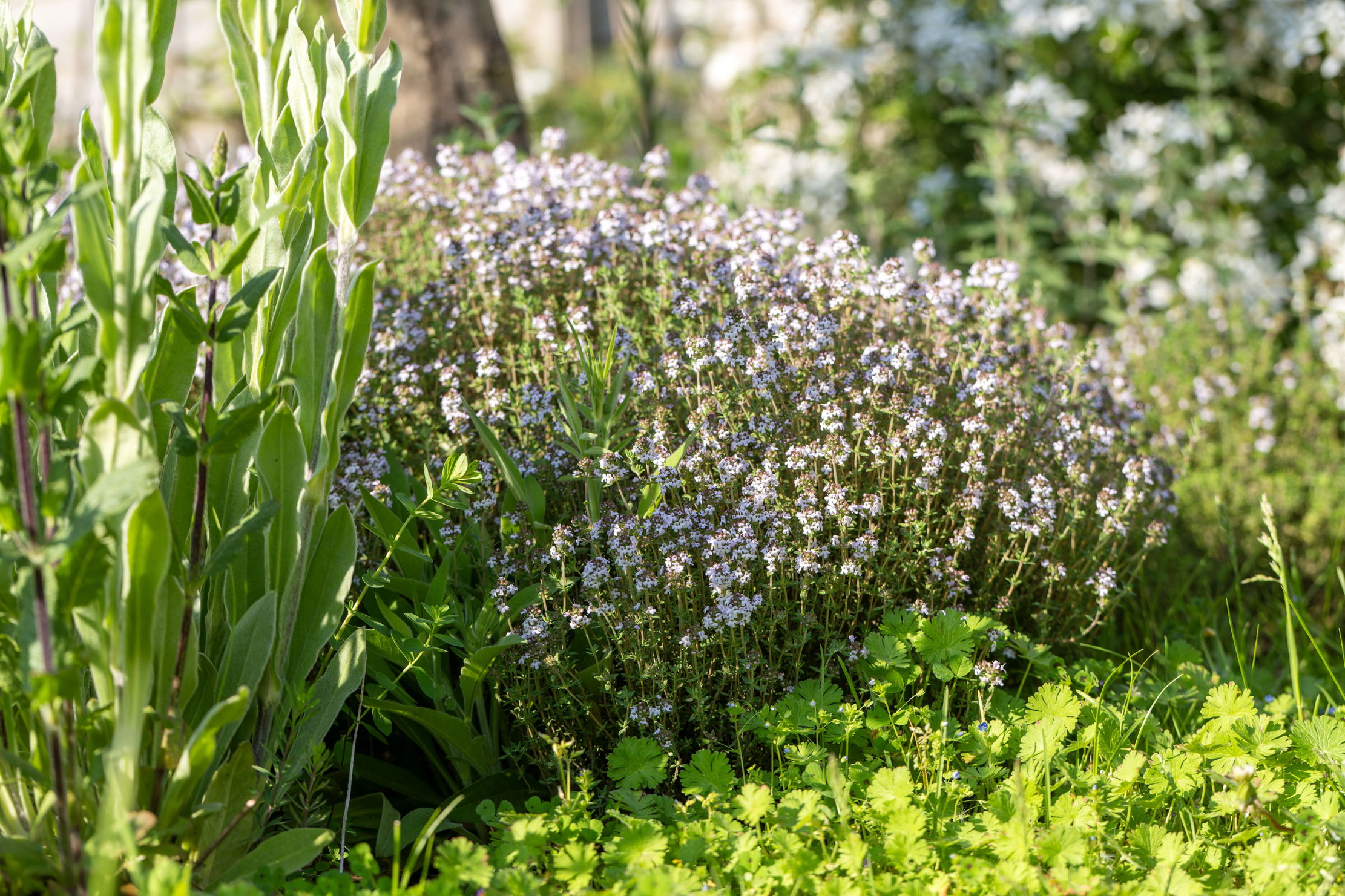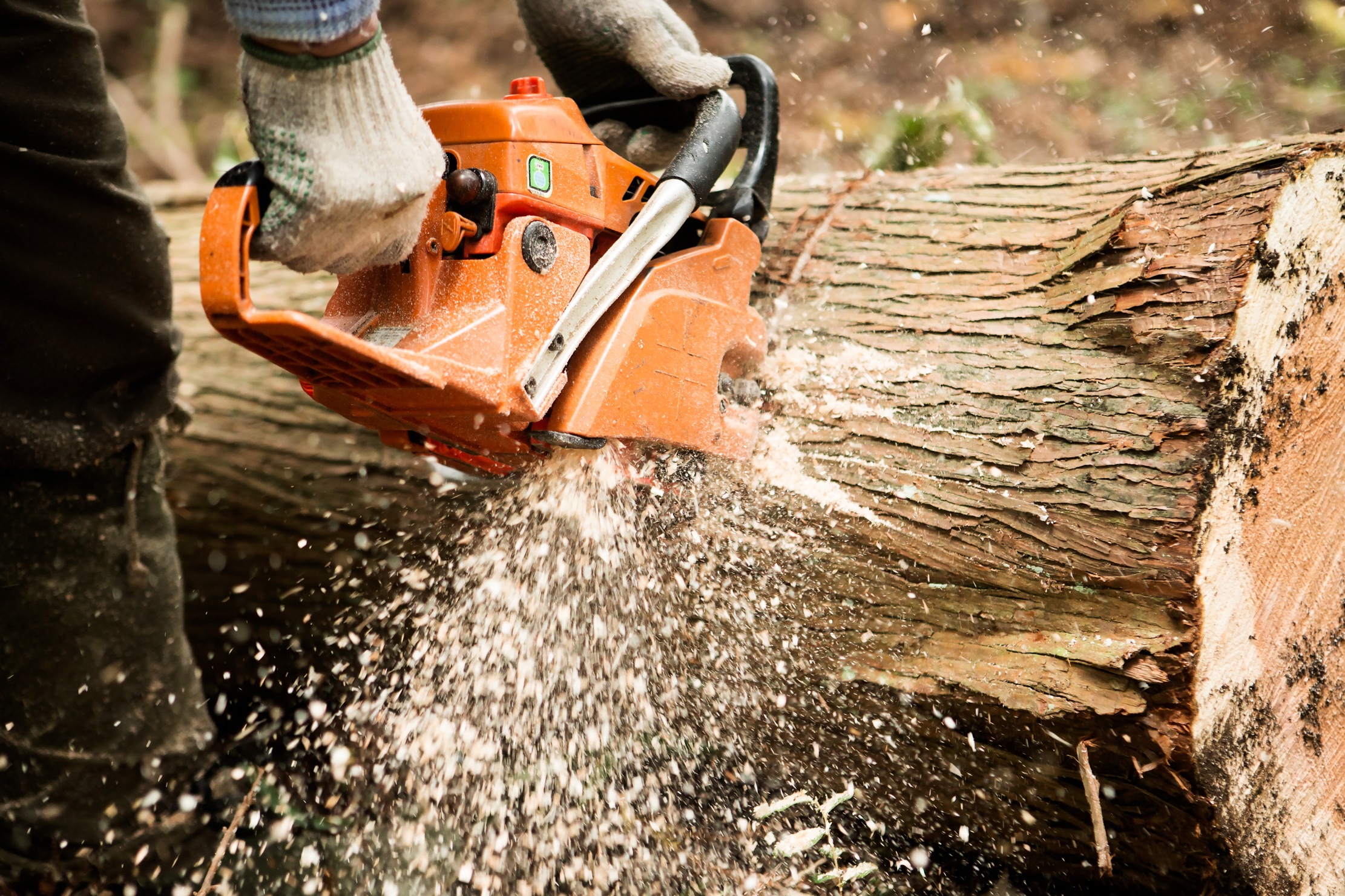About thyme: the herb that goes with any dish
With more than 200 different varieties, there's a thyme to suit any gardener's preference


Thyme's resinous, bright earthiness complements both savoury and sweet dishes, increasing the temptation to over harvest, which can turn your plants into stubby monuments to their flavour. Together with planting it in too wet a position, it’s the most common reason for having to replace plants after a few years. It’s why I buy some of the thyme I use — especially through winter — and prioritise growing a few of my favourite varieties for when their specific qualities make a difference.
There are almost 200 thyme varieties, with a rich array of colours — from deep green to golden to variegated — and bearing flowers that might be lilac, pink or pure white. Add to that the choice of low-growing, overhanging or upright habits and there should be something to suit your preferences. For me, the kitchen dictates much of my choice.
A good broad-leaved common thyme is essential: ‘Tabor’ and ‘Jekka’ thymes are both superb, in flavour and scent, and their large leaves give you more flavour per stem, as well as making chopping easy. I know the idea of variegation is a room splitter, but if you are in favour then ‘Sparkling Bright’ is the best I’ve grown for looks and flavour.
'For me, the kitchen dictates much of my choice'
Lemon and orange thymes are, to my mind, non-negotiables. Although both carry that familiar resinous thyme flavour and scent, their respective citrus notes are so pleasingly true. Using them instantly changes the mood of a recipe: lemon thyme brings a springtime zing to (say) an onion tart, whereas orange thyme makes it more comforting and autumnal, turning one recipe into three. Do try others, as you’ll almost certainly discover new favourites: caraway thyme, with its lemon and caraway-scented leaves and pink flowers, is one I added to the garden last year and it’s really special.
Some varieties — orange thymes, for example — can be started from seed in spring, but they are slow to establish and, being keener to get to the culinary pay off, I start with young plants. Thyme propagates readily, so once you have a few plants, it’s easy to multiply their number. I like taking semi-ripe cuttings during summer.
Snip non-flowering long stems of new growth and place them immediately in a plastic bag to minimise evaporation. Cut each just below a leaf node, to 4in (10cm) or so in length, and remove all but the uppermost inch or so. Bury each three-quarters deep around the edge of a pot full of grit or perlite-heavy compost, and water lightly. Humidity is important to success, so either place the pot in a mist propagator or cover with a small food bag secured with an elastic band: lift once or twice a day to mist and reverse every day or so to prevent condensation building up. Keep somewhere warm (such as a greenhouse) and out of direct sunlight and with luck they should root in a couple of months.

Thyme thrives when given a sunny position, excellent drainage and the opportunity to grow between harvests. It grows differently throughout the year and it’s crucial to respond to this when harvesting: limited winter growth has me buying most at that time of year, but I can be self-sufficient at other times. I prune as much as a third back following the emergence of new growth in spring, and again after flowering. This gives me plenty to use and encourages fresh bushy growth over legginess.
Exquisite houses, the beauty of Nature, and how to get the most from your life, straight to your inbox.
The post-flowering cut is particularly important: without it, thyme can be prone to woodiness and losing quality after a few years. Through the summer, I snip a little of the new growth when I need it, keeping the plant lively and healthy. Thyme should keep for a fortnight or so in the fridge after harvesting and, although fresh growth can be used whole, I usually strip the leaves and discard woodier stems, as they can bring more bitterness than I’m keen on.
Thyme thrives in containers. If your soil is in any way on the heavy side, it’s a great way of ensuring thymes — and other lovers of well-drained conditions — get the growing medium they need to thrive. Although thyme naturally grows in poor soil, it generally isn’t undergoing frequent harvesting from a greedy cook such as I, so from mid spring until late summer I give them an occasional liquid feed to ensure they have what they need. If growth becomes leggy and/or overcomes the amount you harvest, ease back the frequency of feeds. Other than watering in when planting, you should only need to water thyme in periods of serious drought. Give thyme a well-drained, sunny spot and avoid cutting into woodier growth and it should last for many pest- and disease-free years.
Mark Diacono grows edibles, both usual and unusual, at Otter Farm in Devon. Spice: A Cook’s Companion, published by Quadrille, £25, is out now

The romance of the rose, and how it became the flower of love
Generations have sought that unattainable mystical creature, the perfect rose: shapely, dark red and sweetly scented. What is it about

After a long winter, it's time to get out and start preparing for spring
Gardens Editor Tiffany Danneff shares her top suggestions for new plants and seeds this growing season.

The snowdrops of Thenford: 900 varieties that are the pride and joy of Lord and Lady Heseltine
The gardens at Thenford House, home of Lord and Lady Heseltine James Alexander-Sinclair joins snowdrop lovers wandering through more than

Credit: Getty Images
Charles Quest-Ritson: no chain, no gain — how using a chainsaw will improve your garden
Gardeners can be reluctant to take a blade to a healthy tree, but sometimes a severe pruning will leave both
Mark is lucky enough to spend most of his time eating, growing, writing and talking about food. He has written fourteen award-winning books, including A Year at Otter Farm and A Taste of the Unexpected (both won Food Book of the Year, and Garden Book of the Year). Known for growing everything from Szechuan pepper to pecans to Asian pears, Mark's refreshing approach to growing and eating has done much to inspire a new generation to grow some of what they eat. He was involved in the early days of River Cottage, appearing in the TV series, and writing four River Cottage books. Mark writes to a global audience on his best-selling Substack: Mark Diacono’s Abundance.
